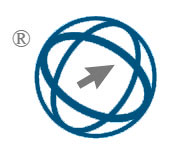Data Mining Approach for River Flood Hazard Time-Series: Using a Combination of Triple Exponential Smoothing and Neural Networks, in Demak
Abstract
Conventional flood hazard maps depict a static perspective on flood risk and are helpful in flood forecasting. Then, time-series flood forecasting research was developed and widely conducted. Still, it has limitations because the univariate method used does not consider the influence of other variables, unlike regression. Also, the determination of flood hazard weights, which is usually conducted through empirical studies using AHP, has a good level of accuracy but has the drawback of expert subjectivity. A new approach is proposed for flood hazard forecasting, combining the Triple ES method with NN and determining weights in a data-driven manner using NN. A combination of time series and regression methods (significantly non-linear), namely Triple ES with NN, results in good accuracy with an MSE value of 3.03, MAE 1.20, RMSE 1.74, R² 0.54, and a MAPE of 32.93%. The evaluation results for flood hazard weight determination with an MSE of 0.0111 and a MAPE of 7.81% show promising results, and the weights can be used in Hazard Flood GIS. Visualization in the form of a GIS Hazard Map can be done after all related raster data have been combined. The computational outcomes, particularly the MSE and MAPE values, demonstrate the effectiveness of the proposed approach, providing a clear understanding of the model's performance.
Full Text:
PDFReferences
D. K. Hakim, R. Gernowo, and A. W. Nirwansyah, “Flood prediction with time series data mining: Systematic review,” Nat. Hazards Res., vol. 4, no. 2, pp. 194–220, Oct. 2023, doi: 10.1016/j.nhres.2023.10.001.
I. Ardiansah et al., “Integrated Streamflow Forecasting System: A Step Towards Smart Flood Management,” Inform., vol. 47, no. 9, pp. 109–121, 2023, doi: 10.31449/inf.v47i9.4890.
S. Parvaze, J. N. Khan, R. Kumar, and S. P. Allaie, “Temporal flood forecasting for trans-boundary Jhelum River of Greater Himalayas,” Theor. Appl. Climatol., vol. 144, no. 1–2, pp. 493–506, Apr. 2021, doi: 10.1007/s00704-021-03562-8.
Q. Yu, Y. Wang, and N. Li, “Extreme Flood Disasters: Comprehensive Impact and Assessment,” Water, vol. 14, no. 8, p. 1211, Apr. 2022, doi: 10.3390/w14081211.
B. Jo, “Peta Banjir Demak 2024, Jumlah Korban, & Update Kondisi Terkini,” Tirto. Accessed: Mar. 30, 2024. [Online]. Available: https://tirto.id/peta-banjir-demak-dan-update-kondisi-terkini-gW6F
DetikJateng, “Banjir Demak 2023 Rendam Seratusan Desa: Data Lokasi dan Penyebab,” Detik. Accessed: Mar. 30, 2024. [Online]. Available: https://news.detik.com/berita/d-6497484/banjir-demak-2023-rendam-seratusan-desa-data-lokasi-dan-penyebab
S. Afifah and D. R. Hizbaron, “Vulnerability assessment of residential buildings to tidal flood hazards in Sriwulan Village, Sayung District, Demak Regency,” E3S Web Conf., vol. 200, p. 01008, Oct. 2020, doi: 10.1051/e3sconf/202020001008.
S. Dewi Novita, A. Alif Nor, T. Taryono, M. Muchamad Farid, and K. Dinda Nur Fadila, “Detection Of Flood Hazard Potential Zones By Using Analytical Hierarchy Process In Tuntang Watershed Area, Indonesia,” Geogr. Tech., vol. 19, no. 1/2024, pp. 61–78, Dec. 2023, doi: 10.21163/GT_2024.191.05.
A. A. Atmaja, M. Asa, K. A. Alam, D. D. Putra, C. N. Yuanita, and C. Patricia, “Strengthening Resilience in the Face of Extremes: Lessons Learned from the 2024 Demak Flood,” RDI Gobal.
Mirza Hanif Al Falah, Tri Retnaningsih Soeprobowati, H. Hadiyanto, A. Rahim, Barra Madini Noor, and N. Permatasari, “Diatom Stratigraphy as a Flood Record in the Lower Tuntang River, Demak, Central Java,” Evergreen, vol. 10, no. 1, pp. 272–282, Mar. 2023, doi: 10.5109/6781082.
A. Purwanto, P. Paiman, and A. Sudiro, “The Use of Sentinel-2A Images to Estimate Potential Flood Risk With A Multi-Index Approach in The Mempawah Watershed,” Geosfera Indones., vol. 8, no. 1, p. 83, Apr. 2023, doi: 10.19184/geosi.v8i1.37156.
K. Prasetyaningtyas, “Prakiraan Daerah Potensi Banjir Bulan Juli-September 2024.” Accessed: Jun. 10, 2024. [Online]. Available: https://www.bmkg.go.id/iklim/potensi-banjir.bmkg?p=prakiraan-daerah-potensi-banjir-bulan-juli-september-2024&tag=〈=ID
Kompas, “BMKG Prediksi Banjir Bandang di Sumbar sampai 22 Mei, Imbau Warga Hindari Lereng Bukit.” Accessed: May 14, 2024. [Online]. Available: https://nasional.kompas.com/read/2024/05/14/11021731/bmkg-prediksi-banjir-bandang-di-sumbar-sampai-22-mei-imbau-warga-hindari
AntaraNews, “BMKG prediksi 12 daerah berpotensi alami banjir bandang kategori siaga.” Accessed: May 15, 2024. [Online]. Available: https://www.antaranews.com/berita/2504189/bmkg-prediksi-12-daerah-berpotensi-alami-banjir-bandang-kategori-siaga#:~:text=Miming menyebutkan untuk periode tiga hari ke depan%2C,Barat%2C Kalimantan Selatan%2C Kalimantan Timur%2C dan Kalimantan Tengah.
Tempo, “Aceh Flooding Subsides, BNPB Warns of Subsequent Downpour.” Accessed: May 15, 2024. [Online]. Available: https://en.tempo.co/read/1867865/aceh-flooding-subsides-bnpb-warns-of-subsequent-downpour
H. Cloke, “Why flooding is still so difficult to predict and prepare for,” theconversation.com. Accessed: Jun. 15, 2024. [Online]. Available: https://theconversation.com/why-flooding-is-still-so-difficult-to-predict-and-prepare-for-126866
Tempo, “Great Losses over 4 Years of Hydrometeorological Disasters: BNPB,” Tempo. Accessed: Jun. 16, 2024. [Online]. Available: https://en.tempo.co/read/1689461/great-losses-over-4-years-of-hydrometeorological-disasters-bnpb
A. Al-Fugara, A. N. Mabdeh, S. Alayyash, and A. Khasawneh, “Hydrological and Hydrodynamic Modeling for Flash Flood and Embankment Dam Break Scenario: Hazard Mapping of Extreme Storm Events,” Sustainability, vol. 15, no. 3, p. 1758, Jan. 2023, doi: 10.3390/su15031758.
M. Shariati, M. Kazemi, R. Naderi Samani, A. Kaviani Rad, M. Kazemi Garajeh, and N. Kariminejad, “An integrated geospatial and statistical approach for flood hazard assessment,” Environ. Earth Sci., vol. 82, no. 16, p. 384, Aug. 2023, doi: 10.1007/s12665-023-11077-w.
N. Umar and A. Gray, “A water level prediction using ARMA and ARIMA models: A case study of the river Niger,” in GRASPA 2021: The International Environmetric Society, 2021. [Online]. Available: https://pureportal.strath.ac.uk/en/publications/a-water-level-prediction-using-arma-and-arima-models-a-case-study
W. M. Wong, M. Y. Lee, A. S. Azman, L. A. F. Rose, and F. P. T. dan Teknousahawan, “Development of Short-term Flood Forecast Using ARIMA,” Int. J. Math. Model. Methods Appl. Sci., vol. 15, pp. 68–75, 2021.
E.-I. Koutsovili, O. Tzoraki, N. Theodossiou, and G. E. Tsekouras, “Early Flood Monitoring and Forecasting System Using a Hybrid Machine Learning-Based Approach,” ISPRS Int. J. Geo-Information, vol. 12, no. 11, p. 464, Nov. 2023, doi: 10.3390/ijgi12110464.
M.-J. Chang, I.-H. Huang, C.-T. Hsu, S.-J. Wu, J.-S. Lai, and G.-F. Lin, “Long-Term Flooding Maps Forecasting System Using Series Machine Learning and Numerical Weather Prediction System,” Water, vol. 14, no. 20, p. 3346, Oct. 2022, doi: 10.3390/w14203346.
A. Borucka, “Seasonal Methods of Demand Forecasting in the Supply Chain as Support for the Company’s Sustainable Growth,” Sustainability, vol. 15, no. 9, p. 7399, Apr. 2023, doi: 10.3390/su15097399.
D. K. Hakim, R. Gernowo, and A. W. Nirwansyah, “Rainfall, Wind Speed, and Temperature Forecast Using Triple Exponential Smoothing and Gradient Descent,” KnE Soc. Sci., Mar. 2024, doi: 10.18502/kss.v9i6.15311.
N. Munier and E. Hontoria, “Shortcomings of the AHP Method,” 2021, pp. 41–90. doi: 10.1007/978-3-030-60392-2_5.
P. Li, “Design of AHP-Delphi Emergency Capability Evaluation Index System Model in Management Stage,” 2022, pp. 1208–1214. doi: 10.1007/978-981-16-8052-6_170.
J. Lin, C. Sreng, E. Oare, and F. A. Batarseh, “NeuralFlood: an AI-driven flood susceptibility index,” Front. Water, vol. 5, Oct. 2023, doi: 10.3389/frwa.2023.1291305.
CivilWeb, “Rational Method Runoff Coefficient.” Accessed: Aug. 09, 2024. [Online]. Available: https://civilweb-spreadsheets.com/drainage-design-spreadsheets/runoff-and-rainfall-intensity-calculator-spreadsheet/rational-method-runoff-coefficient/
R. B. Mudashiru, N. Sabtu, I. Abustan, and W. Balogun, “Flood hazard mapping methods: A review,” J. Hydrol., vol. 603, p. 126846, Dec. 2021, doi: 10.1016/j.jhydrol.2021.126846.
N. I. Saikh and P. Mondal, “GIS-based machine learning algorithm for flood susceptibility analysis in the Pagla river basin, Eastern India,” Nat. Hazards Res., vol. 3, no. 3, pp. 420–436, Sep. 2023, doi: 10.1016/j.nhres.2023.05.004.
A. B. Adeyemi and A. A. Komolafe, “Flood Hazard Zones Prediction Using Machine-Learning-Based Geospatial Approach in Lower Niger River Basin, Nigeria,” Nat. Hazards Res., Jan. 2025, doi: 10.1016/j.nhres.2025.01.002.
M. Nhangumbe, A. Nascetti, S. Georganos, and Y. Ban, “Supervised and unsupervised machine learning approaches using Sentinel data for flood mapping and damage assessment in Mozambique,” Remote Sens. Appl. Soc. Environ., vol. 32, 2023, doi: 10.1016/j.rsase.2023.101015.
Z. Demissie, P. Rimal, W. M. Seyoum, A. Dutta, and G. Rimmington, “Flood susceptibility mapping: Integrating machine learning and GIS for enhanced risk assessment,” Appl. Comput. Geosci., vol. 23, p. 100183, Sep. 2024, doi: 10.1016/j.acags.2024.100183.
H. El-Bagoury and A. Gad, “Integrated Hydrological Modeling for Watershed Analysis, Flood Prediction, and Mitigation Using Meteorological and Morphometric Data, SCS-CN, HEC-HMS/RAS, and QGIS,” Water, vol. 16, no. 2, p. 356, Jan. 2024, doi: 10.3390/w16020356.
H.-J. Wang, R. Merz, S. Yang, and S. Basso, “Inferring heavy tails of flood distributions through hydrograph recession analysis,” Hydrol. Earth Syst. Sci., vol. 27, no. 24, pp. 4369–4384, Dec. 2023, doi: 10.5194/hess-27-4369-2023.
E. Lechowska, “Approaches in research on flood risk perception and their importance in flood risk management: a review,” Nat. Hazards, vol. 111, no. 3, pp. 2343–2378, Apr. 2022, doi: 10.1007/s11069-021-05140-7.
A. Singh, D. Dawson, M. Trigg, and N. Wright, “A review of modelling methodologies for flood source area (FSA) identification,” Nat. Hazards, vol. 107, no. 2, pp. 1047–1068, Jun. 2021, doi: 10.1007/s11069-021-04672-2.
S. Sandiwarno, “Penerapan Machine Learning Untuk Prediksi Bencana Banjir,” J. Sist. Inf. Bisnis, vol. 14, no. 1, pp. 62–76, Jan. 2024, doi: 10.21456/vol14iss1pp62-76.
F. Karim, M. A. Armin, D. Ahmedt-Aristizabal, L. Tychsen-Smith, and L. Petersson, “A Review of Hydrodynamic and Machine Learning Approaches for Flood Inundation Modeling,” Water, vol. 15, no. 3, p. 566, Feb. 2023, doi: 10.3390/w15030566.
B. K. Panigrahi, S. Das, T. K. Nath, and M. R. Senapati, “An Application of Data Mining Techniques for Flood Forecasting: Application in Rivers Daya and Bhargavi, India,” J. Inst. Eng. Ser. B, vol. 99, no. 4, pp. 331–342, Aug. 2018, doi: 10.1007/s40031-018-0333-9.
M. Nayak, S. Das, and M. R. M. R. R. Senapati, “Improving Flood Prediction with Deep Learning Methods,” J. Inst. Eng. Ser. B, vol. 103, no. 4, pp. 1189–1205, Aug. 2022, doi: 10.1007/s40031-022-00720-y.
I. N. da Silva, D. Hernane Spatti, R. Andrade Flauzino, L. H. B. Liboni, and S. F. dos Reis Alves, Artificial Neural Networks. Cham: Springer International Publishing, 2017. doi: 10.1007/978-3-319-43162-8.
J. Thioulouse, S. Dray, A.-B. Dufour, A. Siberchicot, T. Jombart, and S. Pavoine, Multivariate Analysis of Ecological Data with ade4. New York, NY: Springer New York, 2018. doi: 10.1007/978-1-4939-8850-1.
M. Akkaya, “Vector Autoregressive Model and Analysis,” in Handbook of Research on Emerging Theories, Models, and Applications of Financial Econometrics, Cham: Springer International Publishing, 2021, pp. 197–214. doi: 10.1007/978-3-030-54108-8_8.
F. Kronthaler, Statistics Applied With Excel. Berlin, Heidelberg: Springer Berlin Heidelberg, 2023. doi: 10.1007/978-3-662-64319-8.
M. Buchhorn, M. Lesiv, N.-E. Tsendbazar, M. Herold, L. Bertels, and B. Smets, “Copernicus Global Land Cover Layers—Collection 2,” Remote Sens., vol. 12, no. 6, p. 1044, Mar. 2020, doi: 10.3390/rs12061044.
M. Buchhorn et al., “Copernicus Global Land Service: Land Cover 100m: collection 3: epoch 2015: Globe,” Sep. 2020, Zenodo. doi: 10.5281/zenodo.3939038.
DOI: https://doi.org/10.31449/inf.v49i19.7288

This work is licensed under a Creative Commons Attribution 3.0 License.









